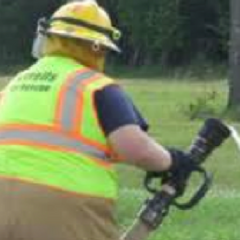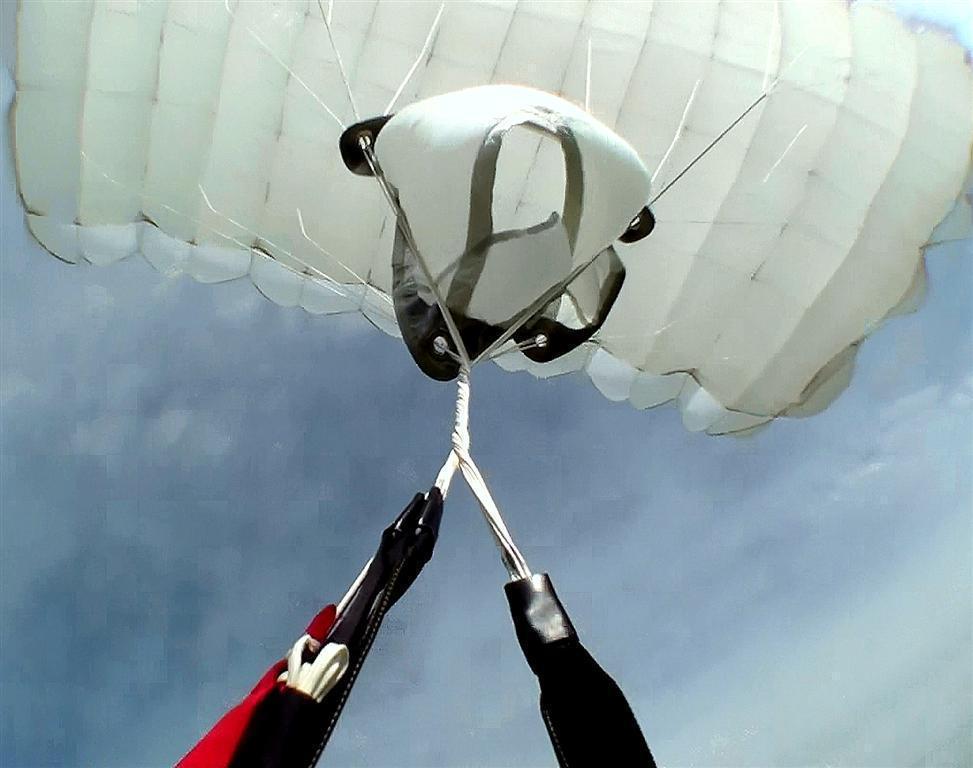Leaderboard
-
in Posts
- All areas
- Adverts
- Advert Questions
- Advert Reviews
- Videos
- Video Comments
- Blog Entries
- Blog Comments
- Images
- Image Comments
- Image Reviews
- Albums
- Album Comments
- Album Reviews
- Files
- File Comments
- File Reviews
- Dropzones
- Dropzone Comments
- Dropzone Reviews
- Gear
- Gear Comments
- Gear Reviews
- Articles
- Article Comments
- Article Reviews
- Fatalities
- Fatality Comments
- Fatality Reviews
- Stolen items
- Stolen item Comments
- Stolen item Reviews
- Records
- Record Comments
- Record Reviews
- Help Files
- Help File Comments
- Help File Reviews
- Events
- Event Comments
- Event Reviews
- Posts
- Status Updates
- Status Replies
-
Custom Date
-
All time
January 20 2016 - August 17 2025
-
Year
August 17 2024 - August 17 2025
-
Month
July 17 2025 - August 17 2025
-
Week
August 10 2025 - August 17 2025
-
Today
August 17 2025
-
Custom Date
07/08/2024 - 07/08/2024
-
All time
Popular Content
Showing content with the highest reputation on 07/08/2024 in Posts
-
3 points
-
2 pointsHi Phil, Re: Steve Nagel, a chiropractor . . . based in North Dakota has frequently claimed that vaccines of all types lead to worse health outcomes for children. A chiropractor is not a medical person. Just another charlatan. Jerry Baumchen
-
2 pointsIt will definitely cause stronger gradients. Remember that the Earth is a semi-closed system. It gets a fairly constant level of energy from the Sun; it retains some, reflects some, and re-radiates some as longwave IR. The balance of all of those determines the temperature. And if you are re-radiating less IR because of increasing CO2 levels, then the upper atmosphere will tend to cool since there's less IR coming from beneath it - even as the surface warms. In fact, stratospheric cooling was one of the big predictions that early climate-change models made. If the theory held you'd pretty much have to see stratospheric cooling, so they looked very hard for that. They weren't able to make accurate, reliable measurements all over the world for a long time, since balloons couldn't be launched frequently enough, or over enough area, to get a good view of the entire stratosphere. Now with better satellites (AIM, TIMED and UARS) they are able to see most of the world's stratosphere and measure its temperature through IR means. And they did indeed see that cooling. What does that mean for hurricanes? The driver for very large storms is, as you mentioned, temperature gradients. Specifically, vertical temperature gradients that set up a heat engine: - Warm waters cause evaporation; warm humid air rises - As the air rises it hits colder air that causes precipitation - Precipitation falls downwards and sets up downdrafts that bring the air back down to surface level - Coriolis forces cause the rising and falling air to deflect to one side or the other, causing rotation of the storm - The inner updrafts and the outer downdrafts start drawing more warm surface air towards the center, intensifying the cycle So as the gradient between surface and upper atmosphere becomes larger, the biggest storms get stronger. The uncertainty comes about because the stratosphere doesn't start to show a cooling signal until about 57.000 feet. And monster storms do indeed get that big (the record is 70,000 feet) but most hurricanes top out around 50,000 feet. So if you have a hurricane that's hitting 60,000 feet it's absolutely going to be more intense. However, its effect on smaller storms is not clear. The gradient is still stronger, because even if the air at 50,000 feet is the same temperature, the lower atmosphere is still warmer. But does that mean that more storms with less energy form, and peter out sooner? Or do you get more monster storms and less smaller ones? That's still up in the air - and is the subject of very intense research right now. https://www.nasa.gov/general/nasa-satellites-see-upper-atmosphere-cooling-and-contracting-due-to-climate-change/ https://newsroom.ucla.edu/releases/stratospheric-cooling-vertical-fingerprinting
-
2 points
-
2 pointsIts mind blowing that numbers like that receive almost no coverage in the news anymore. Every year life is getting cheaper and cheaper.
-
2 points
-
1 pointBut we still vote for someone. There is no "against" box to check on the ballot. In my silly opinion using the against argument is just positioning oneself halfway out the door to not voting. Interestingly, Allen Lichtman, who has a decent track record, is saying Biden will win: https://politicalpulse.net/us-politics/alan-lichtmans-prediction-for-2024/
-
1 pointIf that were my case I'd rest it, too. Please show where I indicated that I wouldn't vote for a potato on a stick over Trump. And that would be for. Elections between two candidates one doesn't like much are normal worldwide. Unlike you, and that's according to you, I'm not one to avoid the putrid nastiness of that reality by just not voting while pretending I am also performing my civic responsibility like those who do. Yes Biden is awful and getting awfuller but if he is on the ticket he'll get my vote.
-
1 pointHi Keith, This reply to you is only because you are a veteran. I worked in three different Air Force hospitals during my 4-yr hitch. Not one had a chiropractor on staff. Every doctor, and I mean EVERY, always said that a chiropractor was a nothing more than a charlatan. Jerry Baumchen
-
1 pointI'd disagree. Chiropractor - phlebotomist - phyiscal therapist - nurse - physician's assistant - psychologist - pharmacist - all medical people who have medical roles to play in healthcare. But not doctors. Insurance adjuster - hospital admin - hospital security guard - non-medical people who work in the healthcare industry. Faith healer - non-medical person who doesn't work in the healthcare industry.
-
1 pointThe point is this election there is no equivalence. Between the two Biden is the clear choice. In the voting booth it’s a no brainer.
-
1 point
-
1 pointUS power sockets are pretty anaemic. Most of the world is on 220-240V and take nowhere that long.
-
1 pointBrent, I think, isn’t quite like that. He’s more like a guy whose house is full of flys and thinks fly swatters don’t work because the first swing didn’t get them all.
-
1 pointFrom TK: Stub UPDATE! I am happy to report that stub 675 which is from the tie knot will be delivered to McCrone this week. 675 should have lots of particles that came from his finger tips and holds the most unusual particles like the titanium antimony. I decided that we should go full bore on the best possible stub and told McCrone we want longer dwell times on each particle and go to the max on the number of particles to analyze. McCrone has assured us that the techniques they are using today are far more advanced than what we used back in 2017. We are expecting to get better analysis of particles we know to be on the stub as well as many never before seen particles. McCone said they have a "window" right now and should be able to get it scanned sooner than later. Myself and the rest of the particle team are anxiously awaiting the results and we will keep you posted as new things emerge. Unfortunately we will not be able to confirm the new particles until I get back to my lab beginning of October so lets keep our heads until final confirmation happens. New data! Exciting times! Tom Kaye
-
1 point
-
1 pointThread bump: This is a good alternative to traditional ripstop repair tape, however this thread may lead me to conclude there is no problem with the traditional repair tape. https://www.seattlefabrics.com/54-Insignia-Cloth-Adhesive-Backed-Polyester-2695-linear-yard_p_60.html I had heard some say traditional ripstop tape is best applied with heat (with a clothes iron) to seal the tape which is supposed to be put on both sides of the fabric to be repaired. The insignia tape has been on a canopy of mine for a few months, about 50 jumps or so on a few locations. It seems to be fantastic, there is no hint of the edges lifting or wear of the fabric itself. This stuff works great on jumpsuits, especially since it does not have the square weave pattern to set it apart visually. From the Seattle Fabrics website: Insignia Cloth Adhesive backed polyester fabric for numbers, letters, and graphic designs. No sewing is required. Printed grid pattern on adhesive paper makes this an easy job. The 54 inch wide roll from which this material is cut from opens it up to applications a narrow tape roll doesn't allow. What do you think?
-
1 pointKinda warm in parts: On Sunday, temperatures in Las Vegas hit 120 degrees for the first time in recorded history, according to preliminary data from the weather service. The temperature had never climbed above 117 degrees prior to Sunday. Las Vegas temperatures have exceeded 110 degrees each day since July 3 and are forecast to do so every day until at least next Sunday. That will mark a stretch of prolonged extreme heat longer than any ever experienced in the city, with 11 days or more above 110 degrees.
-
1 pointbullshit. and there is nothing you have to show that is true or even partially true. 'the family' exists for the survival of the species and that is pretty much it. The family has the same problems that the non-family has. The family, husband and wife, chest on each other and always have. just one example. we are herd animals on this planet only slightly different than other species that have survival instincts built it. There is no justification for 'the family unit' as being a basis for anything. Early families were far different even a few hundred years ago, and/or currently in remote parts of the world where other civilizations exist just fine without ANYTHING to do with the 'family unit' that you envision. How about the government gets out of the family, marriage, gender, sex business? Especially a government that believes in individual rights.... supposedly.
-
1 pointAnd doesn't it drip with irony that in defense of democracy we liberal types are calling for Biden, or anyone with the will, to use the Presidencies new autocratic powers against our enemies. Oh, but you know, it's for the common good and just for a limited time and, unlike them, we can be trusted.
-
1 pointYeah! And what if you're drunk? Ol' Dobbin will find his way home no matter how soused you are. With a car, you'll DIE!!!!!!! I guess if you buy a car you just have to live anywhere you have a beer! That's the opposite of convenient! Stupid libs don't know how gas cars work.
-
1 pointFrom personal experience they are great at long trips for families, business travelers and skydivers. Perhaps for 75 year old drivers who still haven't figured out how to use RFID credit cards they are not ideal. And this whole "I can hold it for six hours" nonsense is an even lamer attempt to justify fear of new technology. I posted this specifically to refute that sort of claim - "an hour to charge." We never stopped for more than ten minutes. And the first time could have been four minutes - but the gas station bathroom wasn't working so I had to scope out a place in the desert where no one would see me peeing. But I guess you'd have to read the post to get that. So in other words, they are just like gas stations for gas cars. Actually EVs are considerably better in that situation. If all the gas stations are closed, you're screwed. If all the chargers are shut down, well - all I need is an outlet. And most stores/homes are not going to have an issue with taking $20 for $2 worth of power.
-
1 pointI can do the same thing in my Honda with a four minute gas stop. And the thirty thousand dollar difference in price buys a lot of gas.
-
1 point
-
1 pointYeah, that was a pic I made that was in the July 1980 issue of Skydiving. It was a 12-way in Spaceland, TX with 10 guys and two chicks. The one that didn't make that issue was when I flew beneath it and shot up from below. It's a lot more interesting than the one that made from above.
-
1 point
-
1 pointOne of the more memorable flights of my life was taking the jet to Rantoul. On the way back we stopped in Provo, Utah because it had the cheapest fuel prices in the country at that point. Landing at Perris with an almost full load of fuel during thunderstorm season was a once in a lifetime experience. "Wow, we touched down right past the ditch. There goes the memorial! There goes manifest. There goes the parking lot. Hmm, we are still going _really_ fast . . . " Fortunately there was plenty of beer.
-
1 pointBack in the late 70's...my college roommate saved up his cigarette money for a month & bought an extremely WELL used para-plane from some guy that should have cut the lines off and made it a car cover years before. The shot & a half lugs on the risers were so corroded that I scraped off an 1/8 of an inch of crud with a pocket knife before even trying to polish 'em back 'into spec'. The risers themselves made a cracking sound when bent the first dozen times we tried to pack it...which was hard enough to do period, all the cells stiff as cardboard & nearly impossible to fit it into the 35.00 contained he bought at a flea market. The lines did 'look' much better after he ran a zippo up & down 'em a few times to mush down the fuzz. I came home from class one afternoon to see him modeling the container with smug satisfaction...the main fit 'damn tight' but looked right. Figured out what he did when I went into the kitchen...on the table was a beach ball size wad of rip-stop tape! He'd pulled off every inch of it from everywhere in, on or around that canopy...heck even the slider had foot or so on it collectively. Next day was his first jump on it...which resulted in a short ride on the 26 Navy - but that was because he'd hooked up the R-3's wrong and the whole thing separated on deployment. (pretty cool to watch from 20' away @ 1800 feet!) Two hours later we were back in the air...and she worked perfectly! Looked about like a screen door coming down with sunlight glowin' all the holes...and talk a stable canopy in deep brakes!! He jumped that POS for another 3 years - we kept the ball of red rip-stop hanging from the ceiling like a 'disco ball' for a few years...he hung it on the Christmas Tree as an ornament after graduation... That is until the cruel, unreasonable, vindictive slut he married....errrr, I mean his wife, made him quit jumping - and threw out everything he had that even smelled like a dropzone. ~ If you choke a Smurf, what color does it turn? ~
-
1 pointHas anyone looked at aging and strength issues with modern adhesive ripstop tape? A few brief tests I did of some F-111 material with adhesive ripstop patches, 18 to 20 years after the patches were made, shows very little if any deterioration of the canopy fabric. This is for tensile tests of the edge of the patch, of the material away from the patch, of the material underneath the patch, and other comparison material of probably similar age. That's the short answer. My few tests also are of some general interest when considering issues of nylon aging, and the strength of older vs. newer parachute fabrics. All the tests were on F-111 style fabrics, and not zero-P material. Riggers are all told about how evil adhesive ripstop tape is, and people have honestly reported how they've seen material that tore easily from around ripstop tape that had been applied for a longer time. I myself have seen some pretty ugly and crackly ripstop repairs on 40 year old Para-Commanders. It is often mentioned that patches "may be detrimental" [Parachute Rigger Handbook] to the strength of the material. Or that "some brands" [Poynters I, 7.13] may degrade the material. Some people have said that the glue may be acidic and weaken the nylon in that way. I have even been told by one authority that using ripstop tape at all on a modern main canopy is a poor rigging practice, and that anything but a temporary patch should be a proper sewn patch, no matter whether a jumper asks a rigger for a quick and cheap solution to the problem of a small hole. The Parachute Rigger Handbook, in contrast, [in 7.7] still allows permanent patching of mains with it, showing sewing around the edges to keep it affixed to slick zero-P material. Ripstop tape has changed over the years. Poyters I has some specs for a minimum 2.5 oz material, that would have made sense on heavy canopy fabrics, but also in another section mentions that ripstop is 1.5 oz material -- closer to the 1.1-1.2 or so of F-111 style fabrics. There are only a few threads on this site about ripstop. While some riggers find it a handy tool for quick fixes on main canopies, others would rather do a proper patch in any case. Still, even if one has the skills as a rigger to do a proper patch, not everyone keeps a large selection of fabric colours, while translucent white ripstop works reasonably well with about any colour. The Parachute Rigger Handbook technically allows ripstop for round reserve canopies (as does Poynter) to a limited extent, but there is a caveat that the manufacturer must allow it, something that is unlikely these days. It is however prohibited on certificated square canopies. There are other parts of the PRH that say not to use it on certificated canopies in general, but that appears to be more about general good usage than what is technically allowed. In any case, just about nobody wants to see it used on a reserve. Still, I have seen ripstop to cover minor wear holes in reserve pilot chutes, as an alternative to completely disassembling the pilot chute for repair or replacing it entirely. While that doesn't necessarily fit with rigging standards, it seems to be a quite practical fix for small areas of damage. My tests: I had put a few pieces of ripstop tape on some F-111 style fabric of unknown but likely young age in 1994, and then in 2012 and 2014 did a number of tensile tests. Unfortunately the pieces I had were small, so I couldn't do all the tests I would have wanted. Still, these are tests on 18 to 20 year old ripstop patches. -- Did anything become extremely weak? No. Thumb tests didn't show any weakness. -- Was there an acidity problem? No. Bromocresol tests on the original F-111, on the adhesive ripstop tape, and on the F-111 underneath the tape (when the tape was peeled back) showed no sign of acidity. -- Was there any loss of strength? If there was, not by a whole lot. We'll get into the tests later after having a closer look at tensile tests that establish baseline information. Due to the small size of the test samples, the tests with clamps couldn't follow the normal standards of having material surrounding the test area. Almost all the tests were done on 1" wide strips. This does decrease the strength of the fabric, as there is no surrounding fabric to give it support. a) For comparison to the fabric that had been patched for 18-20 years, I had some plain F-111 that must be at least 10 years old and probably 20 for all I know. Let's call it the "medium age F-111", and assume it could be 20 years old. Pull tests on a larger piece went to an impressive 50 lbs before snapping, or once maybe even 55 lbs. When cut to a 1" wide strip, it usually breaks at only about 40 lbs. So 40 is still good for a 1" wide strip of fabric. Comparing the 50+ and 40 values against the old 45 lb military specification for F-111 style fabric, it shows the medium age F-111 exceeds it if tested in the skydiving manner of a larger piece, but no longer meets the spec when tested purely as a 1" wide strip -- perhaps what the fabric manufacturers consider the proper test, although I don't know their methods. b) Some essentially brand new F-111 style fabric was available, bought just a few years ago from a major retailer. In tests in a larger piece, it went to 65 lbs before tearing. (Even with slightly poorly aligned clamps, where it started to tear progressively instead of all at once, it went to 60.) In a 1" wide strip, it would break at 48 to 52 lbs, usually about 52. So it is quite a bit stronger than the "medium age" F-111, such as 52 vs. 40 lbs for a 1" wide strip. Nylon aging may be involved, but also very likely improved production processes in the last 20 years. -- What about the strength of the ripstop tape itself? 1" wide pieces pull tested to 45 lbs. The ripstop was 'new', purchased from a major vendor just a few years ago. So it is better than older F-111, and not quite as good as really modern F-111, and probably was never intended to be of quite the same quality. -- Is the sudden transition between ripstop reinforced areas and non-reinforced areas a weak point? From a general engineering perspective, it should be, as one is going from about 3 layers of material that is now stiffer, to a single layer of less stiff material. The flow of stress and strain in the region of a patch will be less evenly distributed and may put extra loads on the material just around the patch. On the other hand, we always deal with areas of different strength and stiffness in parachutes, such as rolled seams and reinforcing tapes on canopies. -- Let's look at pull tests of patches that haven't been aged:: I put pieces of the 'new' ripstop tape on both sides of a 1" wide strip of the medium age F-111. Pull testing the joint between the patch and the base fabric, it didn't break until 43-45 lbs. (With a slight variation when having the clamps close together vs. the standard 1" apart.) So that result shows a new patch provides a higher breaking strength at its edges than the base material alone (typically 40 lbs). This wasn't seen with brand new F-111 however, where a test at the edge of a patch gave basically the same strength as the material alone, 52 lbs in more than one test. I'm guessing that the ripstop reinforces the F-111, so that even when there is unreinforced F-111 that can rip, now there's less unreinforced material that can start to randomly tear between the clamps. If the clamps were a lot further apart, one would expect the breaking strength to go down to the 40 or so for the F-111 alone. While there might be issues with the stiffness of two layers of ripstop tape on F-111 (as mentioned above), that is perhaps more of a problem with randomly oriented forces. When everything is nicely lined up for a standard tensile test, it looks like the patch - at worst - doesn't decrease the overall fabric's strength. -- Now finally let's look at the old test pieces of F-111 with ripstop tape on both sides, that had been sitting stuck together for 18-20 years: The reason it is "18 to 20" is that I did some tests 2 years ago and more this year, on the patches I applied in 1994 to some scraps of F-111 material that had been sitting around, and were likely not new at the time. - Testing the F-111 away from the ripstop tape, it broke at 42 lbs in a 1" wide strip - Good! The basic material hadn't degraded just from being near the ripstop adhesive for years. Strength was similar to other old F-111. (While 42 is more than 40, I doubt there is much statistical significance to the small difference from just one test.) - Testing the junction between the F-111 and where a ripstop patch had been applied on both sides - For a 1" wide strip, in the one good test I was able to do, it broke at 40 lbs. (In another case it was about 35 lbs, but that was with only a 1/2" long strip of F-111 past the patch to grip onto, which always lowers the breaking strength. Other tests with new patches shows that not having a full 1" by 1" square of material to clamp to, can reduce the breaking strength from say 40 lbs to 27 lbs for example. Just not enough material to grip it properly -- more like pulling strands off the edge of a piece of material.) -- Was any of the old material from under the old patch, now 20 years old, degraded on its own? I was able to strip both of the patch pieces off the F-111 and test them individually. All were 1" wide strips. - The ripstop tape broke at 40-45 lbs, so not a whole lot less than new ripstop tape (45 lbs). - The F-111 that had been sandwiched between the ripstop tape and its evil glue for 20 years, broke at 40 lbs. So given that 1" wide pieces of medium age F-111 were breaking at around 40 lbs, and the edge of an 18-20 year old patch breaking at around 40 lbs, and the F-111 underneath when stripped of the patch also breaking at around 40 lbs….therefore: The conclusion is that there really was very little deterioration if any of the F-111 due to the adhesive ripstop patch. Nor was there any evidence that any of the material was in any way acidic. I can't rule out some small strength loss. That would be possible, hidden in the variability of testing with hand held clamps and by the limited size of the test material available, which limited the number of pull tests and data points that could be collected. I also can't rule out that some adhesive ripstop tape material, from some manufacturers in the past (or the present?) might cause deterioration of the material it is attached to. Without having adhesive ripstop that is guaranteed to a certain specification, and without much better testing, this doesn't mean that anything goes with ripstop tape. But it does suggest that ripstop tape, even from some years ago, will not necessarily degrade the material it is attached to. Unrelated to ripstop tape issues , one can also see that older F-111 style fabric can be significantly weaker than brand new fabric. E.g. roughly 50 vs. 65 lbs in tensile tests of larger areas (old vs. new), or 40 vs. 52 lbs for 1" wide strips. The old standard for F-111 style fabric was for a minimum strength of 45 lbs per inch. So there may be some deterioration due to nylon aging, and perhaps a larger improvement in new fabrics due to improved design & production.
-
1 pointWhile it has always been the policy of this web site to allow a lot of leeway with the creation of anonymous accounts and there are some good reasons to have them for the purposes of whistle blowing, I have an extremely low tolerance for people that create anonymous accounts simply to stir up shit and attempt to get around bans. If you feel the need to make an anonymous account for the purposes of making a jackass out of yourself, don't be surprised when the moderators cut off your posting privileges. quade - The World's Most Boring Skydiver
-
Newsletter

.thumb.jpg.4bb795e2eaf21b8b300039a5e1ec7f92.jpg)










